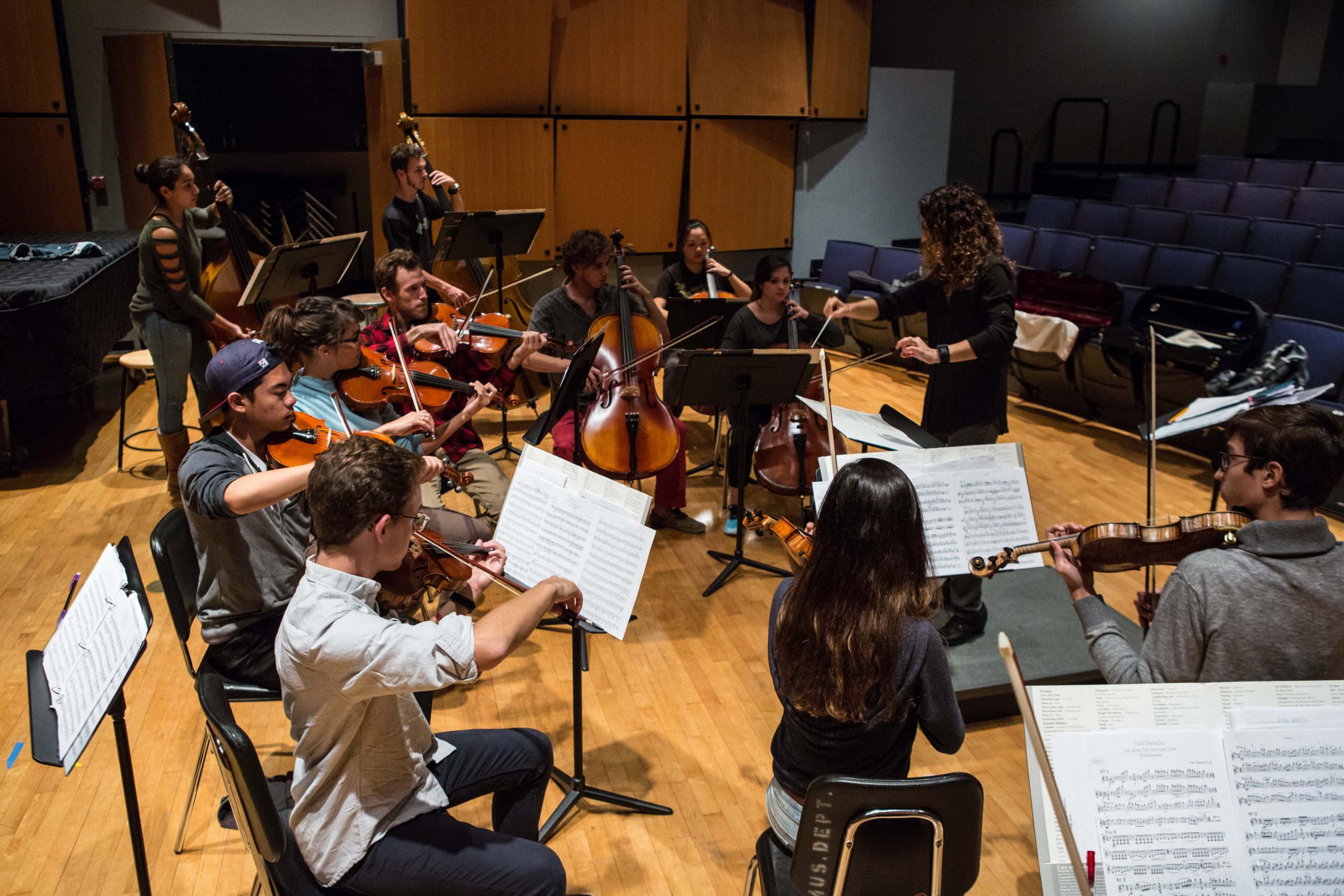
The LMU Chamber Orchestra is enjoying a successful reinvigoration, thanks to the combined efforts of Music Department Chair Mark Saya and chamber orchestra Director Tania Fleischer, as well as a talented group of instructors and student musicians.
Currently an ensemble of 16 string musicians, the Chamber Orchestra recently tackled works ranging from classical Schubert to 20th century German composer Kurt Schwaen at its fall concert. “It was a brilliant program this past fall in terms of variety and style, and it was very well played,” said Saya. “The program this spring promises to be just as good or better.”
“We have taken a positive step towards accomplishing our long-term goal,” said Fleischer, “which is building a strong, unified ensemble that plays with technical proficiency and excellent musical understanding.”
When Saya began his term as chair of the Music Department in the fall of 2014, he assessed the department’s needs and identified the string program as a candidate for improvement. “I thought the string program really could use some attention both in terms of the faculty — some new life there — and in terms of bringing in more students and better student players,” said Saya. “I made that a bit of a goal and a challenge in my first year as chair.”
Fleischer, a longtime LMU faculty member and piano instructor, came onboard as the orchestra’s director in 2015, bringing with her a dedicated enthusiasm for her craft as well as a proven track record of growing the orchestra program at the Culver City High School Academy of Visual and Performing Arts. “I built their orchestra from a string quartet … to a group of about 35 string players,” said Fleischer. “That’s why I came to Mark and thought I could help out in this situation, to help reenergize the string program.”
According to both Saya and Fleischer, a key component to the program’s success has been the addition of two faculty members. Violinist Ken Aiso and cellist Yoshika Masuda are both highly accomplished musicians who work with students in small groups during sectional rehearsals. “Their expertise has been invaluable to me,” said Fleischer. “The sectional rehearsals provide the learning space and time for the students to learn directly from our string faculty about specific technical and musical considerations of their instruments, which I would not have the time or even the expertise to do within the context of a full rehearsal.”
In addition to new faculty, the Music Department received a substantial grant last year, which provided funds for instrument acquisition and repair, as well as student stipends. Saya noted that active recruiting and the ability to offer scholarships was instrumental in growing the orchestra’s talent pool. “This particular year we had a good number of string players, especially violinists, apply [to LMU],” he said. “I very diligently went after them in terms of recruitment. With a lot of effort and a certain amount of good luck, a good number of them came to school here, to the point where we quadrupled or more the number of music majors and minors in the orchestra.”
Looking forward, Fleischer hopes to continue to grow the program by reaching out to the larger LMU community for participation. Currently, about half of the 17 musicians in the Chamber Orchestra are non-music majors.
“Having majors of different types in the orchestra actually enriches everybody’s experience because we can all learn from each other,” said Fleischer. “There’s so much to be learned in an ensemble — leadership, teamwork, attention to detail, all of these things that you need to be successful in life. And at the same time it fills your soul and gives you a lot of satisfaction as a human being. The arts do that to us; we all need them in our lives.”



